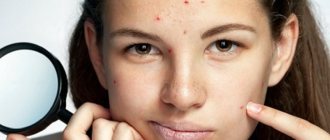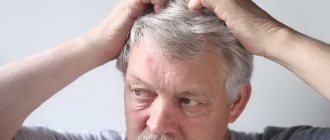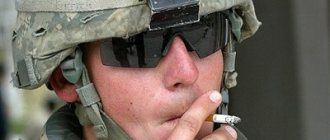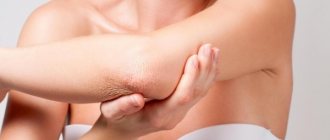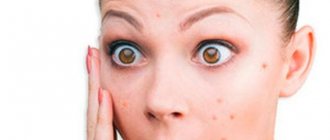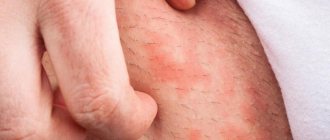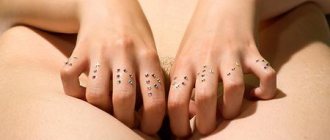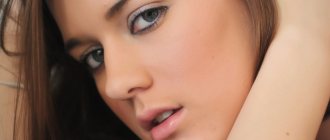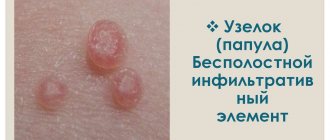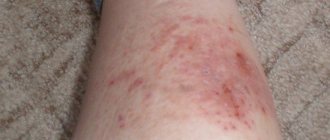What it is
Watery pimples on the body are superficial formations that are localized under the outer layer of the epidermis - the stratum corneum.
Due to abnormal processes, limited exudation of intercellular and tissue fluid between skin cells is observed. This is what causes bubbles to appear.
They may be filled with clear liquid or other contents. Most often, regression occurs under the influence of medications. However, sometimes the pathology goes away on its own.
The outcome in this case can be different:
- watery pimples disappear without leaving any traces behind;
- a pigmented area remains in the area of the vesicle;
- In the area of the skin element, other formations are formed - scars, pustules.
Reasons for appearance
There are quite a few factors that lead to such problems. To determine the exact cause, it is worth conducting a comprehensive examination.
The child has
The appearance of watery acne in children can be caused by various factors. Parents should consult a pediatrician in a timely manner so as not to miss the onset of an infectious pathology.
Infants often develop small pimples. They can be white or almost transparent. These formations do not pose any danger and go away on their own.
Watery rashes may be associated with the following factors:
- allergic reactions - most often the rash is localized in the neck, arms, cheeks;
- prickly heat – rashes are localized in the folds of the skin;
- dermatitis – in babies, the rash is localized in the diaper area;
- streptoderma - the area of the face and hands is first affected;
- chickenpox - the first blisters affect the face, stomach and neck;
- dyshidrosis – usually occurs in hot weather and appears as a watery rash on the feet and palms.
In an adult
The appearance of watery acne in adulthood is most often caused by the following factors:
- Allergic dermatitis is a consequence of reactions to various irritating factors. This could be household chemicals, plant pollen, food.
- Herpes is a viral pathology. It is accompanied by the appearance of severely itchy blisters.
- Dyshidrosis – provokes the appearance of watery rashes. Their occurrence is due to disruption of the functioning of the sebaceous glands.
- Scabies is the result of special mites getting on the skin. As a result, a watery rash and severe itching occurs.
- Molluscum contagiosum is a serious viral pathology. It is transmitted through household contact. In this case, the bubbles are usually localized on the fingers. You can see a small black dot in their structure.
- Hormonal imbalance , metabolic disorder.
- Miliaria - characterized by itchy rashes that are localized on the bends of the limbs.
Reds
The appearance of red rashes may be associated with the following disorders:
- allergic dermatosis;
- prickly heat;
- atopic dermatitis;
- chickenpox.
Where to go if acne doesn't go away?
The initial examination of a child with acne is carried out by a pediatrician or dermatologist . To clarify the diagnosis and prescribe concomitant treatment, consultation with other specialists may be required (see section “How to identify the cause of acne”).
How treatment occurs, methods
Treatment of acne on a child's back may include the following methods:
- compliance with hygiene rules;
- correction of diet;
- the use of external and systemic medications (a dermatologist may recommend taking a Darsonval course);
- treatment of existing diseases of internal organs;
- phototherapy is a procedure for treating acne with a laser (used in severe cases).
What will happen if left untreated, consequences
As a rule, acne goes away on its own after puberty. With the right treatment and following medical recommendations, acne will disappear in a couple of months.
The main complication of acne is scarring on the skin, which can cause psychological discomfort to a teenager.
If the scars are severe, the doctor may recommend undergoing a course of cosmetic procedures - chemical peeling, lymphatic drainage, dermabrasion.
What does itching mean?
There are quite a few serious pathologies in which watery rashes on the skin itch.
Most often, itching occurs with the following anomalies:
- Scabies. The causative agent of this disease is the scabies mite. This disease is characterized by the appearance of itchy rashes that resemble nodules. After some time they transform into bubbles.
- Fungal infections. This is a common cause of blisters on the skin. As a rule, its appearance is due to violation of hygiene rules in public places. Often the occurrence of the disease is observed in limited groups.
- Allergic pathologies. As a rule, watery acne on the body occurs with the development of contact dermatitis.
Its key reason is working with allergenic substances or chemical elements. A watery rash occurs 5-10 minutes after contact with the substance.
- Chickenpox. This disease is more common in children. It usually occurs in patients 3-9 years of age. The pathology has a high degree of contagiousness. Therefore, people who have not had chickenpox are highly likely to become infected.
With this disorder, the bubbles can be localized on any part of the body. However, the face and limbs are most often affected.
Transparent watery pimples in a child
Children suffer from watery pimples more than adults. They are often caused by infectious diseases:
- Measles/rubella are diseases with similar symptoms. They cause watery rashes on the body, high fever and body aches. With rubella, a small red rash is still visible.
- Chickenpox - with this disease, the rash initially begins with only a few pimples on the body, but the very next day the child is covered from head to toe with small watery pimples with transparent contents. Within a week, the pimples go away on their own, but they need to be coated with brilliant green or Fukortsin.
- Streptoderma is a disease caused by streptococcal infection. Children can become infected through contact with a sick child, at school, on a walk, in kindergarten. Streptoderma manifests itself as watery pink rashes with slight itching. The skin around acne becomes dry and flaky.
Treatment of watery acne on the body
To cope with pathology, it is very important to choose complex therapy. Treatment should be prescribed by a doctor depending on the provoking factor.
Read about cleansing your face for acne before and after. Delex Acne gel for acne. More details here.
Medicines
If watery pimples are not accompanied by itching and burning sensations, dealing with the problem is quite simple. If the formations itch, this may indicate dangerous skin pathologies.
In any case, medications are selected depending on the provoking factor:
- If the cause of the formation of watery rashes is allergic reactions, the use of antihistamines is indicated. Doctors prescribe drugs such as tavegil, suprastin, etc. To cope with local symptoms, allergy ointments are used.
- When acne appears on the face, gentle therapy is required. Those with dry skin can use baby cream. To strengthen the immune system, immunostimulating agents are indicated.
- If the cause is skin pathologies, the use of antifungal or antiviral agents is indicated. If the provoking factor is a subcutaneous mite, you should use ointments for scabies.
- If watery rashes are associated with nervous overexcitation, sedative medications should be used.
At home
All folk remedies can be used only after consulting a doctor. Home recipes help to cope with many disorders, but in the presence of serious pathologies they will not give a noticeable effect.
The most effective products include the following:
- Watery pimples on the legs can be quickly eliminated by using foot baths based on a decoction of string or calendula. The product must be hot enough.
The duration of the procedure should be no more than 30 minutes. The treatment session should be repeated 2-3 times a day.
- Acne on the face should be treated with fresh aloe juice. The more often the manipulation is performed, the faster you can cope with the disease.
- If watery pimples appear on your hands, you should use a pink solution of potassium permanganate. It should have a low concentration. This will help avoid skin burns.
- Watery pimples on the fingers can be treated with apricot oil.
Treatment
A dermatologist treats acne in children. Severe disease may require consultation and treatment of a surgeon, endocrinologist and other specialists.
In the initial stage of the disease, only local therapy (external agents) is carried out; in severe forms, systemic medications may be required.
An important component of treatment is good compensation for other diseases (endocrine, gastroenterological, etc.), since they can directly affect the formation of acne in children.
Allergen removal
Watery pimples are quite often the result of allergic reactions. Provoking factors can be food products, chemicals, and pollen.
Most often, such rashes occur due to the action of a provoking factor on a specific area of the body. The appearance of a rash on the hands may be the result of contact with poisonous plants or chemical elements.
To cope with pathology and avoid the occurrence of similar problems in the future, it is very important to strictly follow all medical recommendations and avoid any contact with irritating factors.
Preventive measures
To prevent watery pimples from appearing on your body, you need to take care of your health. If you did not suffer from childhood diseases as a child - measles, chickenpox, rubella - we recommend taking advantage of vaccination. Childhood illnesses are much more severe in adults. The vaccine will be especially useful for women who are planning a pregnancy. If you contract these diseases in the first 3 months of pregnancy, the child may be born with serious disabilities.
It is important to prevent the skin from drying out and use moisturizing creams with retinols. When coming into contact with chemicals, do not forget to wear gloves. Strengthen your body with vitamins and be less nervous, then no disease will overcome you.
Prevention
There are general recommendations that help minimize the threat of watery acne:
- carefully adhere to the rules of personal hygiene - pathologies such as molluscum contagiosum or scabies are spread by contact;
- healthy diet - it is important to monitor skin reactions after adding new foods to the diet;
- monitor the state of the immune system, get proper rest;
- choose clothes made from natural fabrics - this is especially important when purchasing items that come into direct contact with the skin;
- provide dosed exposure to ultraviolet radiation - such radiation has antimicrobial characteristics.
Manifestation of viral diseases
Pimples on the hands, the causes of which lie in the presence of infectious diseases, require special attention in treatment.
Pimples on the hands can indicate serious illnesses
Water pimples on a child’s hands may indicate the presence of a serious disease such as chicken pox. Conducting self-diagnosis and practicing self-medication is extremely dangerous to health. The disease can be recognized by its accompanying symptoms.
A rash on the hands in the form of acne is initially localized only in certain areas of the body, and then spreads to other healthy areas. It brings a lot of inconvenience and significantly reduces the quality of life of the patient.
As a rule, such rashes on the hands are itchy and itchy. These symptoms may be accompanied by a deterioration in the child’s general health, as well as an increase in temperature. However, such signs do not always occur.
The disease requires immediate treatment, which consists of the use of local antiviral drugs and antiseptics, which are used to treat acne on the hands and other parts of the body.
For this purpose, the medications Acyclovir, Zovirax and Herpevir are used. They are available both as ointments and tablets for oral administration.
Pimples on the hands may indicate a serious pathology such as streptoderma. Most often, the infectious disease occurs in a child or adult with a weakened immune system. In this case, bubbles similar to dry pimples are localized in the affected area, which can itch. This disease requires immediate treatment, as it can lead to serious consequences.
Dry acne must be treated with antiseptics, which include brilliant green (brilliant green), potassium permanganate (potassium permanganate) and hydrogen peroxide.
Erythromycin will help cope with the disease
In therapy for children and adults in this case, powerful local antibiotics must also be used, which include the following drugs:
- "Erythromycin";
- "Gentamicin";
- "Triderm".
In more severe cases, systemic treatment is required, which is carried out in a hospital setting.
Photo: Types of rashes
See the causes of acne in newborns. How to treat globular acne with iodine? Find out further.
How to get rid of acne on the face at home?
The answer is here. Watery acne on the body can be associated with a variety of factors. To establish the exact causes of problems, you should contact a specialist in a timely manner and strictly follow his recommendations. Doctors select treatment after conducting a comprehensive examination.
Drug treatment
Allergic acne is treated with antihistamines. Doctors can prescribe “Suprastin” or “Tavegil”, and smear acne with special ointments.
Dyshidrosis is treated with sedatives and antihistamines. To eliminate acne, ointments with glucocorticoids are used. It would be appropriate to carry out ozone therapy or laser resurfacing of exposed pimples. Streptoderma can be treated with antihistamines. Doctors prescribe Amoxiclav, Azithromycin, and Ichthyol ointment. For fungi and viruses, doctors prescribe antifungal and antiviral drugs at the discretion of the doctor.
